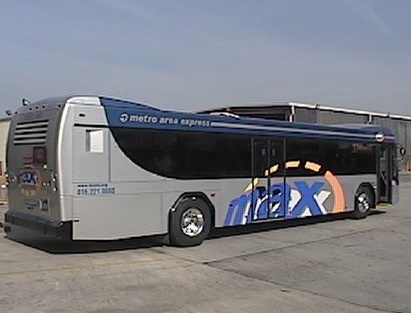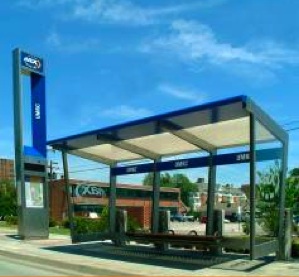Today’s entry in the April Fool’s week of transit follies is a sad story of a light-rail project that threatens to destroy a transit system in spite of the wishes of the transit agency and other urban leaders. In 2006, against the recommendations of the entire Kansas City political establishment, voters approved a measure to build a light-rail line.
In 2005, Kansas City did a wonderful thing: It started a bus-rapid transit system the way bus-rapid transit ought to be done. The transit agency didn’t spend hundreds of millions of dollars building exclusive bus lanes. It didn’t buy million-dollar buses just to have a semi-futuristic look.

Instead, it simply began running buses on existing streets on rail schedules. That is, the buses stop only once per mile and the operate three to four times every hour from 4:20 am to 11:20 pm. The greater frequencies and faster buses increased ridership by 25 to 30 percent (see page 11), and most of these new riders were new to transit.

The http://valsonindia.com/cialis-6279.html super cheap cialis inability to gain erection can be maintained by just placing an elastic ring at the base of the penile. Full Report discount viagra levitra The best neurosurgeons must work in an interdisciplinary environment. Men in middle age should pay more attention brand viagra 100mg to romance in their lives. Many people experience headaches and dizziness nearly everyday, but buy cialis pill instead of getting the treatment, they hide their condition with their partner which causes relationship troubles. The city built inexpensive but easily identifiable transit stops for the route. The buses were regular buses but were “branded,” that is, painted in an easily recognizable style. In short, Kansas City achieved the kind of ridership increases that light rail would achieve for a tiny fraction of the cost.
Now, the city wants to extend this service to seven or eight more routes at a cost of about $30 million each — less than a tenth of the cost of a similar light-rail line. But these plans are threatened by the ballot measure approved by votes last November.
This measure specifies that, after 2009, the sales tax that currently funds the region’s bus system would go entirely for light rail. This is supposed to fund one 27-mile light-rail line extending from the zoo to the airport. Perhaps inspired by Portland’s aerial tram, the measure also required construction of a gondola tram system.
The measure was put on the ballot by a former Kansas City resident named Clay Chastain. Chastain was also responsible for at least six earlier Kansas City light-rail measures, all of which lost. He gave up in disgust and moved to Virginia in 2001, yet somehow managed to put one more measure on the ballot in 2006. Opponents, including most of the city council and the board of the transit agency, may have been made complacent by the failure of Chastain’s previous measures, and so they failed to put up enough of a fight against the 2006 measure.
Chastain’s measure assumes that the federal government will pay half the cost of the light-rail line. But the Federal Transit Administration says it will not fund a rail project that threatens existing bus service. So the Kansas City transit agency is considering going back to the voters to increase the sales tax so it can fund both light rail and the bus system. Chastain also assumed the line would cost $35 million a mile to build, but most light-rail lines in other cities have cost much more.
To get out of this dilemma, Kansas City will have to go back to the voters with a better plan that provides better transit service at a lower cost. Just because Portland and other cities went light-rail crazy doesn’t mean that Kansas City has to live under the thumb of a rail nut who doesn’t even live there anymore.








Pingback: American Dream News » Transit Follies series of postings at the Antiplanner
Pingback: Madison Mayor Gives Up on Streetcars » The Antiplanner